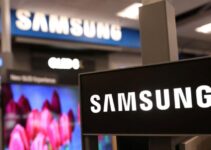Moschino is a luxury fashion house Italian multinational company. Franco Moschino founded the luxury fashion brand in 1983. The company has established a very large network of approximately over 150 boutiques in various countries worldwide. Today, we’ll discuss the brand analysis of Moschino; it focuses on its mission, vision, values; customer reviews, social media presence, marketing campaign analysis, web and social media traffic, customer journey, and target audience demographic.
Brand Analysis of Moschino
Let’s discuss the brand analysis of Moschino; some of the main elements involved in the Moschino brand analysis are as follows;
Mission, Vision, and Value of Moschino
The mission statement of Moschino is translating the beauty and joy of fashion and following the lighthearted approach while developing fashion designs relevant to the company’s narrative. The luxury fashion brand expresses the beauty and styles in its fashion clothes representing the excited desires and elegance of men and women. However, the company doesn’t lose sight of the problems and issues of everyday life.
The vision statement of Moschino is playing with fashion designs and having fun while keeping its feet on the ground. Beauty, glamour, and elegance would make customers and users feel joyful after wearing the brand’s clothes. The vision and objective of the luxury fashion brand is to bring confidence and joy to people’s lives.
Customer Reviews and Feedback about Moschino
The online customer reviews, star ratings, and feedback analysis of Moschino on various platforms are as follows;
- Trustpilot: 2stars rating out of 26 reviews
- Amazon: 4.6stars rating out of 279 reviews
- Fragrance Direct: 4.8 stars rating out of 145reviews
- CVS: 4.5 stars rating out of 364 reviews
- Walmart: 4.9stars rating out of 16 reviews
- Reviews.io: 1.6stars rating out of 5 reviews
- LookFantastic: 4.7 stars rating out of 7reviews
The online customer reviews, star ratings, and feedback analysis of Moschino show that there is a mixture of both positive and negative. Happy and satisfied customers of the luxury fashion brand would share high star ratings and positive reviews about the brand. The dissatisfied customers would share their discontent and their negative experiences with the brand.
Social Media Presence of Moschino
The social media presence and following network of Moschino on various social media platforms is as follows;
- Instagram: 12 million followers
- Facebook: 1.5Million followers
- X: 527.4Kfollowers
Moschino has established a very large following network and a strong presence on various social media platforms. The luxury fashion brand regularly posts videos and pictures of the latest fashion designs, market fashion trends, and stylish accessories on various social media profiles. A proactive social media presence would help the luxury fashion brand connect and engage with the targeted customers and make them aware of the growing fashion trends.
Marketing Campaign Analysis of Moschino
Moschino runs various types of marketing and advertisement campaigns for the promotion of its luxury fashion designs products, services, and accessories. The luxury fashion brand employs various media channels; traditional and digital media platforms, collaboration with fashion designers, influencer marketing, in-store marketing, and philanthropic activities. Multiple marketing and advertisement campaigns on different media channels would help the luxury fashion brand amplify its market reach and approach various segments of the customer market.
Web and Social Media Traffic of Moschino
The web and social media traffic of Moschino on various media platforms is as follows;
- Traffic: 434.3Kmonthly average visitors
- Average Duration: 1.10 minutes
The source of web and social media traffic comes from the following countries:
- USA: 18.15%
- UK: 11.18%
- Italy: 9.86%
- Spain: 5.52%
- Canada: 3.67%
- Others: 51.6%
The proportion of web traffic comes from the following media channels:
- Direct: 35.07%
- Referrals: 4.07%
- Organic Search: 42.07%
- Paid Search: 12.46%
- Social: 3.96%
- Email: 0.22%
- Display: 1.44%
Percentage of traffic comes from following social media platforms;
- Instagram: 55.39%
- Facebook: 18.47%
- Pinterest:
- Reddit: 26.14%
- X:
- Others:
Moschino Customer’s Journey
The customer journey of Moschino starts with running various types of marketing and advertisement campaigns for the promotion of its luxury fashion products. If the stylish fashion designs attract the attention of the target audience, they will visit the fashion stores and boutiques of the fashion brand to check out the quality, texture, and uniqueness of the luxury fashion brand. However, if the fashion designs and the product quality meet their standards; they will buy the product; otherwise, they move on to the next luxury fashion brand option.
Target Audience Demographic of Moschino
The demographic segment of the target audience of Moschino is as follows;
- Age: 18 to 64 years old
- Gender: 38% men and 61% women
- Education: higher and well aware-of fashion
- Income: Higher
- Interest: luxury fashion, stylish designs, creative
- Social Status: higher and brand-conscious
The demographic segmentation of the target audience of Moschino allows you to create a buyer persona and customer avatar of the ideal customers. They are both men and women from various age groups; they have a great interest in luxury fashion designs; and higher social status and they want to express themselves creatively with unique and creative fashion designs and styles.
Conclusion: Brand Analysis of Moschino | Moschino Brand Analysis | Strategic Analysis of Moschino
After an in-depth study of the brand analysis of Moschino; we have realized that Moschino is the world’s leading retail chain luxury fashion brand. If you are learning about the Moschino brand analysis; then you should keep in mind the abovementioned mission, vision, values; customer reviews, social media presence, marketing campaign analysis, web and social media traffic, customer journey, and target audience demographic.

Ahsan is an accomplished researcher and has a deep insight in worldly life affairs. He goes Live 3 days a week on various social media platforms. Other than research writing, he’s a very interesting person.


